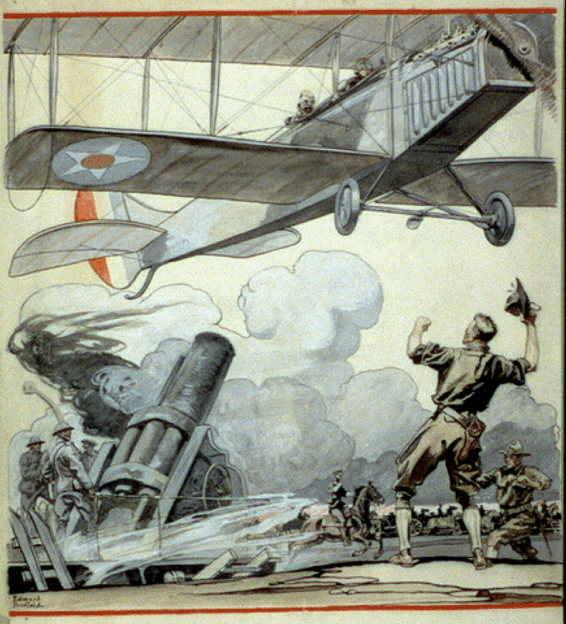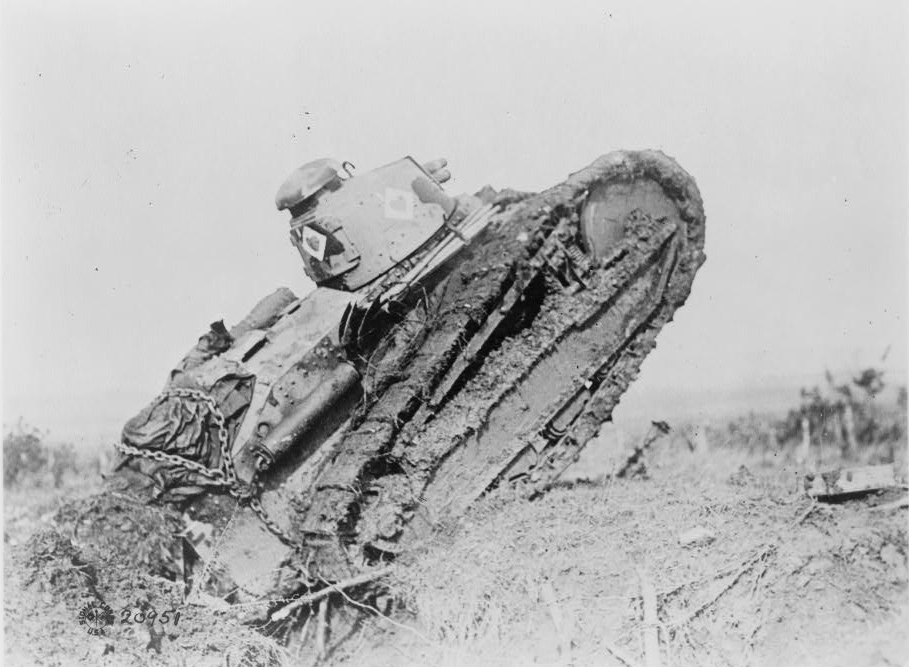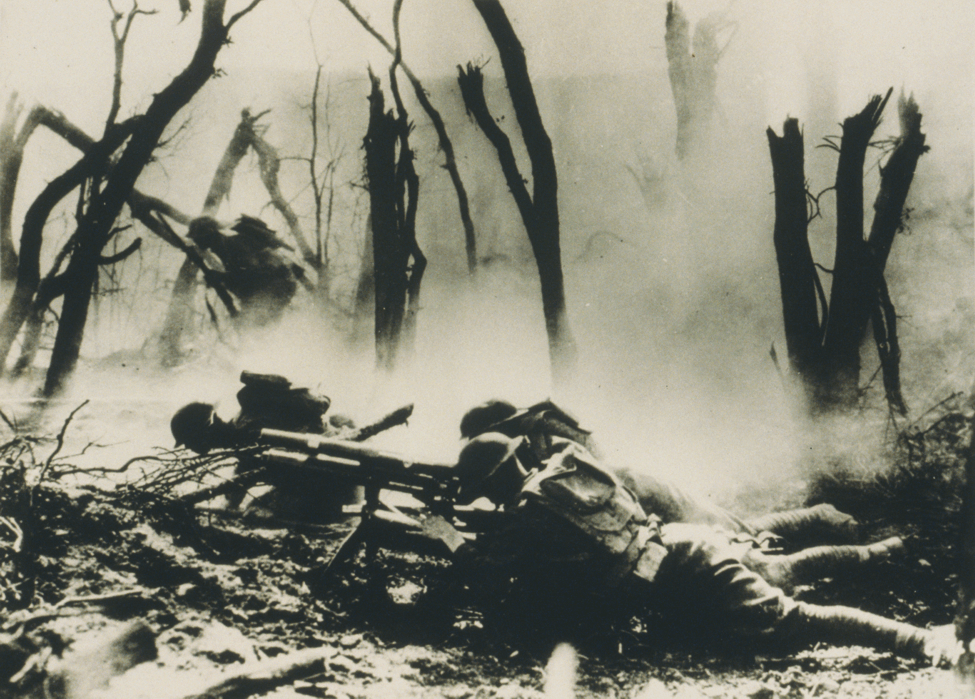|
Submarines
changed naval warfare
The photo shows a German U-boat (submarine) that washed ashore in Great Britain shortly after the war. Submarines were difficult to detect because they could travel and shoot torpedoes while underwater. Two torpedo launching tubes are visible at the front of the submarine, on the left in this photo. |
|
Airplanes
became a weapon
Airplanes were used mainly for scouting enemy positions when World War I began. Later in the war they were equipped with machine guns and bombs. This is a typical design, called a biplane because it has two wings. |

|
Machine guns
changed the battlefield
Machine guns became one of the deadliest weapons in World War I. A few men with a machine gun were as effective as fifty or more soldiers with rifles. In some battles during the war, casualty numbers (dead and wounded) reached into the hundreds of thousands. |

|
Poison gas was
a terrifying weapon
Poison gas was first used by the German army, and later by both sides in World War I. Chlorine gas, phosgene, and mustard gas (named for its smell) were among the chemicals used. Gas could cause damage including horrible blistering of the skin, temporary blindness, and fatal lung damage. Gas masks like those shown in the photo filter out the poison gas from the air. By the end of the war this protection made the use of gas weapons not very effective. Use of poison gas as a weapon has since been banned by international agreement. |
|
Tanks became
widely used
Tanks were another new weapon introduced in World War I. They could drive across open fields, safe from most gunfire. Tanks were first developed by the British during the war as a way to attack German trenches that were defended by machine guns and barbed wire. The photo shows a small tank developed by the French for the same purpose. |

|
The horror of
modern war
The new technology of weapons made World War I more deadly and terrifying than any war the world had ever experienced. Counting both military and civilian deaths, an estimated 16 million lives were lost. Many millions more were wounded. The famous photo below shows a nightmarish scene on a battlefield in France. The men are U.S. soldiers attacking a German army unit. |

All images courtesy the Library of Congress.
Some images have been edited or resized for this page.
|
Copyright Notice
Copyright 2009, 2022 by David Burns. All rights reserved. As a guide to the Virginia Standards of Learning, some pages necessarily include phrases or sentences from that document, which is available online from the Virginia Department of Education. The author's copyright extends to the original text and graphics, unique design and layout, and related material. |